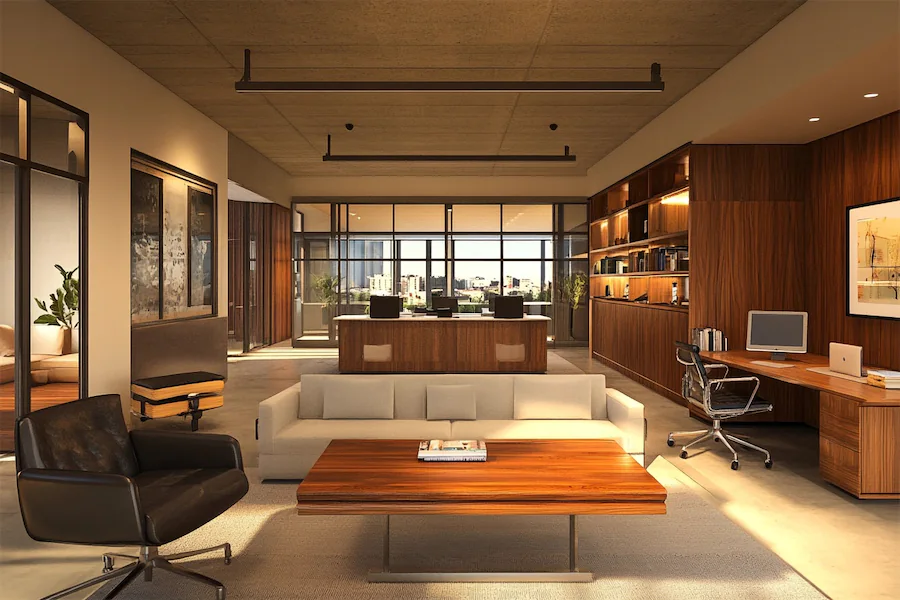An open-concept office room eliminates physical barriers to create a spacious, collaborative environment that fosters communication and flexibility among employees.
Introduction to Open-Concept Office Rooms
Open-concept offices feature large, open spaces with minimal internal walls, promoting interaction and teamwork. This design aims to enhance collaboration, improve communication, and utilize space efficiently.
History and Origins of Open-Concept Office Rooms
The open office concept dates back to the early 20th century, with architect Frank Lloyd Wright’s design of the Larkin Administration Building in 1906, which aimed to promote efficiency and communication by eliminating private offices. The design gained popularity in the 1960s and 1970s as companies sought to reduce costs and improve teamwork.
Key Features of Open-Concept Office Rooms
- Large, Unpartitioned Spaces: Open areas without cubicles or private offices encourage interaction.
- Flexible Workstations: Desks and seating arrangements that can be easily reconfigured to accommodate different team sizes and projects.
- Shared Amenities: Communal resources like meeting rooms, lounges, and collaborative zones.
- Natural Lighting: Maximized use of windows and open spaces to allow natural light to permeate the area.
Applications of Open-Concept Office Rooms
- Creative Agencies: Facilitates brainstorming and collaborative projects.
- Tech Startups: Supports agile methodologies and rapid team changes.
- Co-working Spaces: Provides flexibility for various businesses and freelancers.
Considerations When Designing an Open-Concept Office Room
- Acoustic Management: Implement sound-absorbing materials to control noise levels.
- Privacy Solutions: Incorporate quiet zones or pods for tasks requiring concentration.
- Ergonomics: Ensure workstations are designed for comfort and productivity.
- Zoning: Define areas for different activities to maintain organization.
Conclusion
Open-concept office rooms offer a modern workspace solution that encourages collaboration and flexibility. By thoughtfully addressing potential challenges such as noise and privacy, businesses can create an environment that enhances productivity and employee satisfaction.
